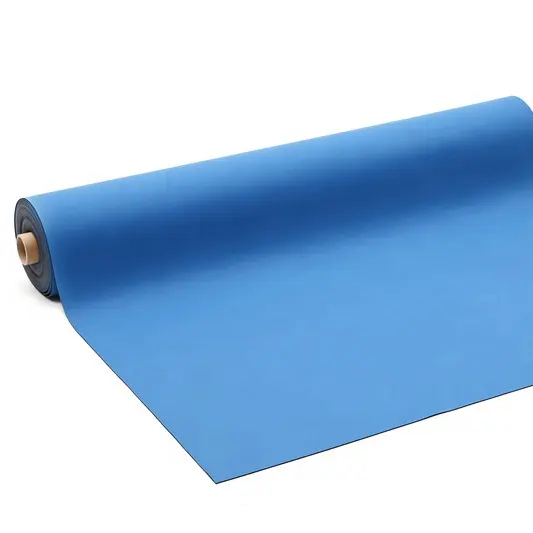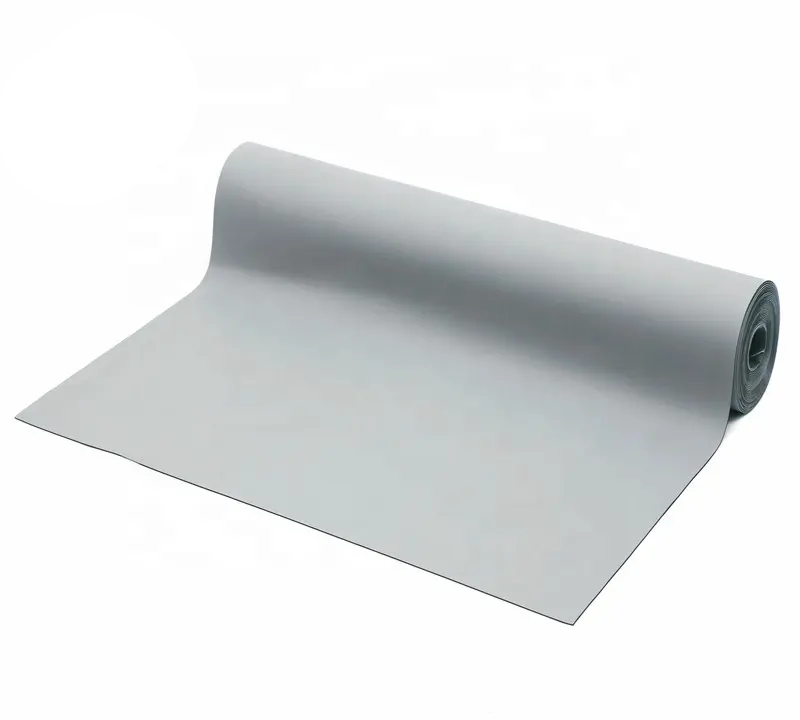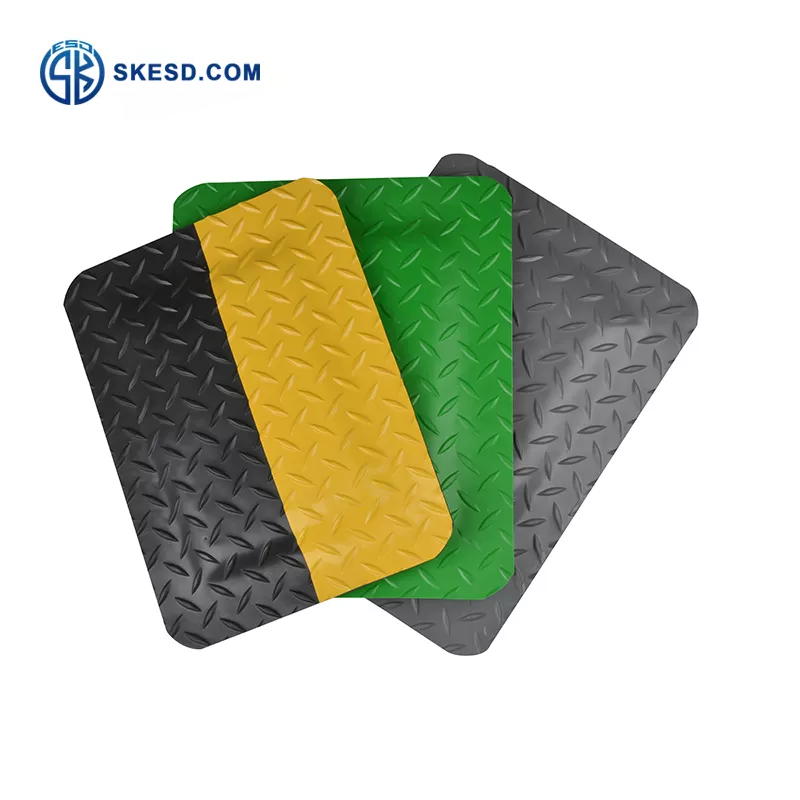This is where the RoHS 2.0 standard and ESD mats come into play. In this article, we will delve into the significance of RoHS 2.0 and discuss how ESD mats can help in complying with this standard.
Understanding RoHS 2.0 Standard

RoHS 2.0, short for Restriction of Hazardous Substances 2.0, is a regulatory standard developed to restrict the use of certain hazardous materials in electrical and electronic equipment. Its primary objective is to protect the environment and human health by minimizing the use of substances like lead, mercury, cadmium, and others that can be harmful if not properly managed during the product lifecycle. By complying with RoHS 2.0, manufacturers ensure their products are environmentally friendly and safe for consumer use.
ESD Mats and Their Role
ESD mats, also known as electrostatic discharge mats or anti-static mats, are specially designed mats that provide a controlled path for static electricity to flow, thereby preventing static discharge and protecting sensitive electronic components. They are commonly used in areas where electrostatic-sensitive devices (ESDs) are handled, such as manufacturing facilities, laboratories, and repair shops. ESD mats effectively dissipate static charges and help maintain a static-safe work environment.
Benefits of Using ROHS2.0 ESD Mats
Using ESD mats offers several benefits, both for the protection of electronic components and ensuring the overall quality and reliability of products. First and foremost, ESD mats safeguard sensitive electronic components from electrostatic discharge, which can cause immediate damage or lead to long-term reliability issues. By using these mats, manufacturers can significantly reduce the risk of costly failures and improve product performance.
Additionally, ESD mats help prevent damage to electronic devices caused by static electricity. When a person or object with an electric charge comes into contact with sensitive components, the discharge can cause malfunctions or even render the device useless. ESD mats create a controlled environment where static electricity is safely dissipated, minimizing the chances of damage.
Features to Consider in ROHS2.0 ESD Mats
When choosing an ESD mat, it is important to consider certain features to ensure its effectiveness. The material and construction of the mat play a crucial role in its ability to dissipate static charges. Common materials used for ESD mats include rubber and vinyl, with varying levels of conductivity. The surface resistance and conductivity of the mat should meet specific requirements for effective static dissipation.
Moreover, the size and thickness of the ESD mat should be suitable for the intended workspace and application. A larger mat allows for more coverage and flexibility, while a thicker mat provides better cushioning and durability. These factors should be considered based on the unique needs of the work environment.
Choosing the Right ROHS2.0 ESD Mat
Selecting the appropriate ESD mat requires evaluating specific requirements and considering the workspace and application. Manufacturers should assess the level of static sensitivity of their products and determine the necessary protection measures. The size of the workspace, layout, and ergonomic considerations should also be taken into account when choosing the right ESD mat.
Furthermore, in order to comply with the RoHS 2.0 standard, it is essential to select ESD mats that meet the necessary regulatory requirements. Manufacturers should look for products that are specifically labeled as RoHS 2.0 compliant, ensuring that the materials used in the construction of the mat align with the standard.
Proper Usage and Maintenance of ROHS2.0 ESD Mats
To maximize the effectiveness of ESD mats, proper usage and maintenance are crucial. The mats should be installed and set up according to manufacturer guidelines, which may include grounding the mat to a suitable electrical ground. Regular cleaning and care are important to remove contaminants that can affect the conductivity of the mat. It is recommended to use approved cleaning agents and follow specific cleaning instructions provided by the manufacturer.
Regular testing and monitoring of the rohs2.0 ESD mats are also necessary to ensure their continued functionality. This can be done through periodic resistance measurements or by using specialized testing equipment. By following these guidelines, manufacturers can maintain a reliable static-safe work environment and extend the lifespan of their ESD mats.
Other ESD Protection Measures
While ESD mats play a vital role in preventing electrostatic discharge, they are not the only measure for ESD protection. Other complementary measures include grounding wrist straps and footwear, which help to safely discharge static charges from personnel. ESD-safe clothing and equipment also contribute to minimizing the risk of static discharge during handling and assembly processes. In manufacturing environments, comprehensive ESD control programs are implemented to ensure static-free operations.

Impact of RoHS 2.0 on ESD Mat Industry
The introduction of the RoHS 2.0 standard has significantly impacted the ESD mat industry. Manufacturers now need to adapt their manufacturing processes to comply with the standard and ensure their products are RoHS 2.0 compliant. This has led to changes in material selection, manufacturing practices, and increased demand for ESD mats that meet the necessary regulatory requirements.
Additionally, the development of RoHS 2.0 has spurred technological advancements in ESD mat design. Manufacturers are continually exploring innovative materials and construction techniques to improve the performance and effectiveness of ESD mats. This has resulted in the availability of a wide range of ESD mats that cater to various industry requirements and specific applications.
Conclusion
In conclusion, the RoHS 2.0 standard plays a crucial role in ensuring the safety, reliability, and environmental sustainability of electronic products. ESD mats, on the other hand, provide an effective solution for preventing electrostatic discharge and protecting sensitive components. By understanding the requirements of RoHS 2.0 and choosing the right ESD mats, manufacturers can comply with the standard while maintaining a static-safe work environment. With the ever-evolving technology landscape, the importance of ESD protection and adherence to regulatory standards like RoHS 2.0 cannot be overstated.
FAQs
1.What does RoHS 2.0 stand for?
RoHS 2.0 stands for Restriction of Hazardous Substances 2.0. It is a regulatory standard that restricts the use of certain hazardous substances in electrical and electronic equipment.
2.Why is RoHS 2.0 important for electronic products?
RoHS 2.0 is important for electronic products as it ensures the use of environmentally friendly and safe materials, protecting both human health and the environment.
3.How do ESD mats protect sensitive components?
ESD mats provide a controlled path for static electricity to flow, dissipating static charges and preventing electrostatic discharge that can damage sensitive electronic components.
4.What are the key features to consider when choosing an ESD mat?
When selecting an ESD mat, important features to consider include material and construction, surface resistance and conductivity, and the size and thickness of the mat.
5.Are there any alternative methods for ESD protection?
Yes, there are alternative methods for ESD protection, such as grounding wrist straps and footwear, ESD-safe clothing and equipment, and implementing comprehensive ESD control programs in manufacturing environments.
continue reading
Related Posts
Rohs 2.0 has emerged as a crucial aspect of compliance […]




